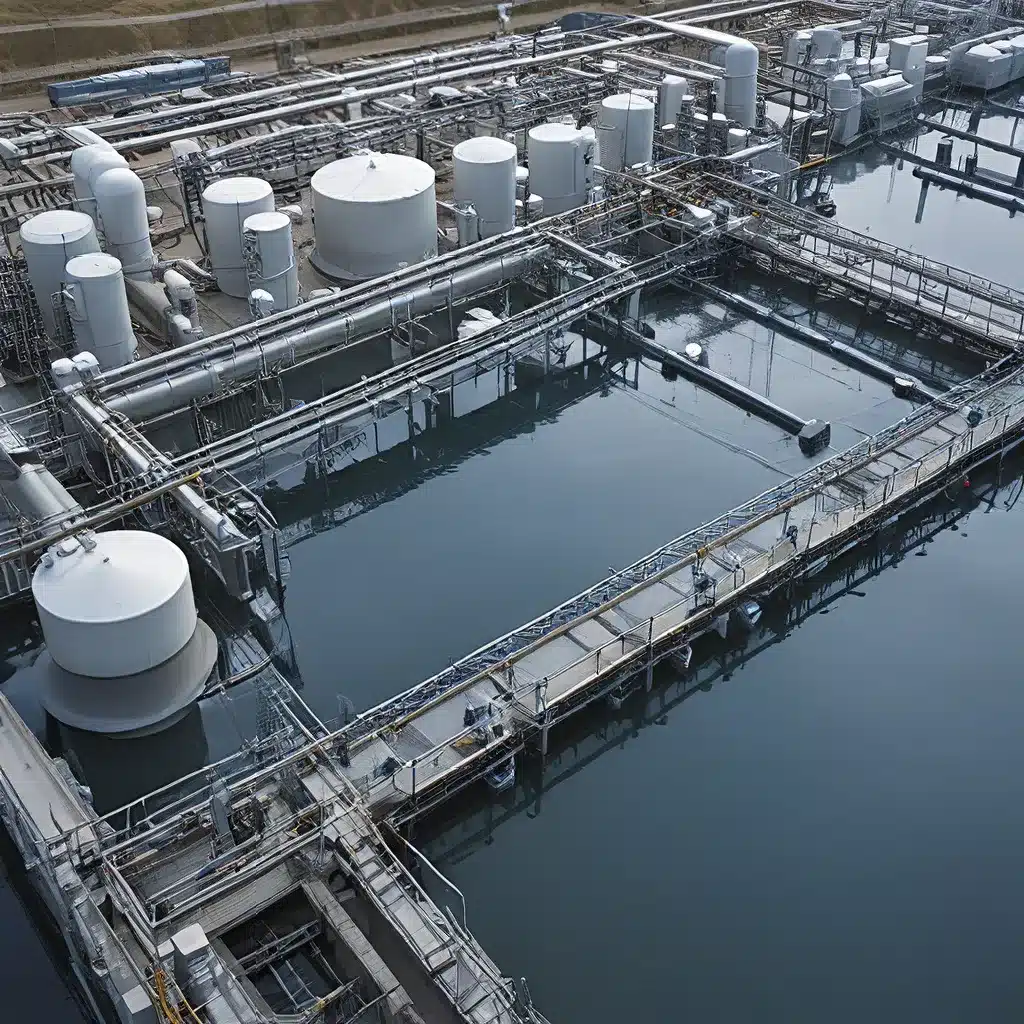
Future-Proofing Water Treatment: Exploring the Latest Trends in Technological Advancements
As I sit here sipping my morning coffee, thinking about the future of water treatment, I can’t help but feel a sense of excitement and wonder. The world of water technology is evolving at a breakneck pace, and the innovations on the horizon have the potential to transform the way we manage one of our most precious resources.
Let’s dive in, shall we?
The Rise of Biotechnology
One area that has truly captured my imagination is the advancements in biotechnology. Scientists have been harnessing the power of nature itself to develop cutting-edge solutions for water treatment. Take, for example, the use of genetically engineered microorganisms to remove contaminants from wastewater. These tiny microbes have been programmed to target and consume specific pollutants, effectively cleaning the water in a more eco-friendly and efficient manner than traditional chemical treatments.
But that’s just the tip of the iceberg. Researchers are also exploring the potential of biomimicry, where they look to nature’s own water-purifying systems for inspiration. Imagine a water treatment plant that operates like a wetland, using plants and microorganisms to filter and clean the water – a truly sustainable and self-regulating solution.
And let’s not forget about the advancements in genetic engineering. Researchers are now able to manipulate the DNA of certain plants and bacteria to enhance their water-cleaning capabilities, leading to more robust and efficient water treatment systems.
The Power of Nanotechnology
Another area that’s been making waves in the water treatment industry is nanotechnology. Imagine being able to deploy microscopic particles that can target and remove specific contaminants from water. That’s exactly what’s happening with the use of nanomaterials in water treatment.
These nanoparticles can be designed to latch onto heavy metals, pesticides, or even harmful bacteria, effectively removing them from the water supply. What’s more, they can be tailored to release beneficial compounds, like nutrients or disinfectants, to further enhance the water purification process.
The applications of nanotechnology in water treatment are truly boundless. Researchers are exploring the use of nano-biosensors to detect and monitor water quality in real-time, allowing for quicker response times and more efficient treatment. And the potential for nano-scale water filtration systems is simply mind-boggling.
Embracing Automation and Precision
As if the advancements in biotechnology and nanotechnology weren’t enough, the water treatment industry is also benefiting from the rise of automation and precision technologies. Picture a water treatment plant that can optimize its operations based on real-time data, adjusting chemical dosages, flow rates, and energy consumption to maximize efficiency and minimize waste.
Internet of Things (IoT) sensors and artificial intelligence (AI) are playing a pivotal role in this transformation. By collecting and analyzing vast amounts of data, these technologies can help water treatment operators make more informed decisions, optimize processes, and even predict and prevent potential issues before they arise.
And the benefits of automation and precision don’t stop there. Imagine a world where water treatment facilities are equipped with robotic systems that can perform tasks with pinpoint accuracy, from maintenance and repair to the actual water treatment processes. This level of automation not only improves efficiency but also enhances worker safety and reduces the risk of human error.
Embracing Sustainable Solutions
As we look to the future of water treatment, it’s clear that sustainability is a key priority. After all, what’s the point of developing cutting-edge technologies if they don’t align with our broader environmental goals?
That’s where innovations like soilless cultivation and vertical farming come into play. These technologies not only reduce water consumption but also minimize the environmental impact of traditional agricultural practices, potentially paving the way for a more sustainable future in water management.
And let’s not forget about the role of renewable energy in powering our water treatment facilities. By harnessing the power of the sun, wind, or even hydroelectric sources, we can reduce our reliance on fossil fuels and further minimize the carbon footprint of our water management systems.
The Future is Bright (and Wet)
As I look out the window at the rain falling gently, I can’t help but feel a sense of optimism about the future of water treatment. The advancements we’ve seen in biotechnology, nanotechnology, automation, and sustainable solutions are just the beginning.
Who knows what the next decade will bring? Perhaps we’ll see the widespread adoption of virtual water systems, where digital simulations help us better understand and manage our water resources. Or maybe we’ll witness the rise of blockchain technology in the water industry, ensuring the transparency and traceability of our water supply.
One thing is certain: the future of water treatment is bright, and the team at Inland Waters Inc. is at the forefront of this exciting technological revolution. So, if you’re ready to dive into the future of water management, be sure to check out our website and see how we can help you future-proof your water treatment operations.


